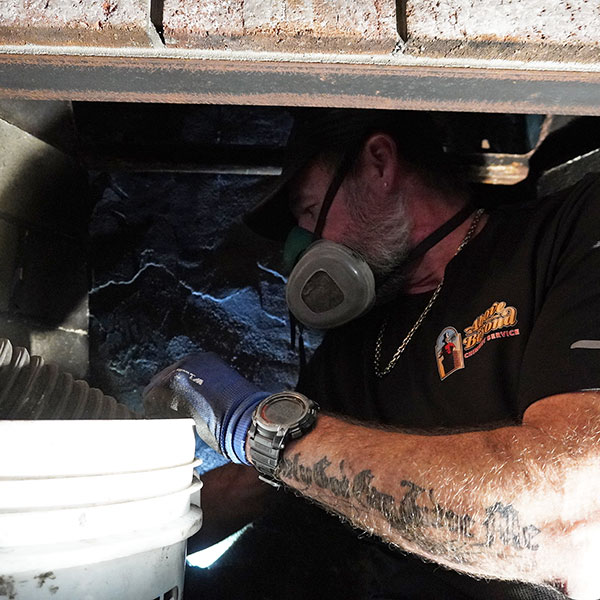Mold in Chimneys: What You Need to Know
For mold to grow, certain conditions must be present. Mold thrives in areas that a poorly ventilated, dark and damp. Most chimneys provide at least the first two conditions. Chimneys that leak for any number of reasons provide the third and can lead to a very serious outbreak of harmful mold.
 Mold dangers
Mold dangers
As a living substance, many types of mold can be dangerous to humans when its spores (tiny particles) are inhaled. Symptoms can include upper respiratory ailments, allergy flare-ups, coughing, sore throat, lung infections and in extreme cases death.
How do you know if there’s mold in your chimney?
The average homeowner doesn’t have the tools to closely examine the inside of a chimney flue. You may detect a “moldy” or “musty” odor, but it’s best to not trust your nose. Bring out a professional chimney technician.
Professionals who service and repair chimneys can perform a thorough chimney inspection to detect the presence of mold. Not only will they find mold growth, but they also will determine the reason it began to grow in the first place.
Water and chimneys don’t mix
Because chimneys provide a dark atmosphere with relatively little ventilation, adding a little moisture is usually all it takes for mold to start taking over.
Water can get inside your chimney flue in a variety of ways. Three of the most common include:
- Rain/snow falling directly into the flue if there’s no working chimney cap in place
This is simple: have a full-width chimney cap installed. You can do this job yourself, but unless you’re familiar with the process, it’s better to hire a chimney expert.
- Through cracks in the concrete chimney crown, which seals the top of the chimney around the flue pipe(s)
Chimney crowns can crack over time, and as more and more water moves into the cracks, more and more damage is done. Eventually, water will move down into the flue area.
- Through cracked bricks and decayed mortar
Bricks and mortar can be damaged due to lightning, earthquakes, hail, severe house-settling, extreme temperatures and plain old age. Once the masonry is compromised, water can easily move into the system.
 Having mold removed from your chimney
Having mold removed from your chimney
If you see a little patch of mold on your shower curtain, they make sprays you can use to resolve this problem easily. It’s not so easy when a potentially large outbreak of mold is going on inside a chimney.
Chimney service technicians and mold removal specialists take great precautions when removing mold to protect themselves and other people in the area. Special tools and solvents often are required to thoroughly remediate a mold issue.
It’s inadvisable to attempt mold detection and removal from a chimney on your own. Speak with a local chimney sweep company that specializes in chimney mold removal and let them come out and perform an inspection. That’s the most effective way to approach the situation.
A professional chimney inspection may also turn up areas of damage or malfunction you weren’t aware of. This allows you to get the necessary repairs made before the issues become serious and expensive.
Above & Beyond Chimney Service of Dedham, MA, can help with mold problems in your chimney. We’re a fully licensed Massachusetts Contractor and certified through the Chimney Safety Institute of America. We’ll find the mold and remove it and make sure everything else in your chimney is working as it should.
Speak with a chimney mold expert today at (781) 383-0415.
